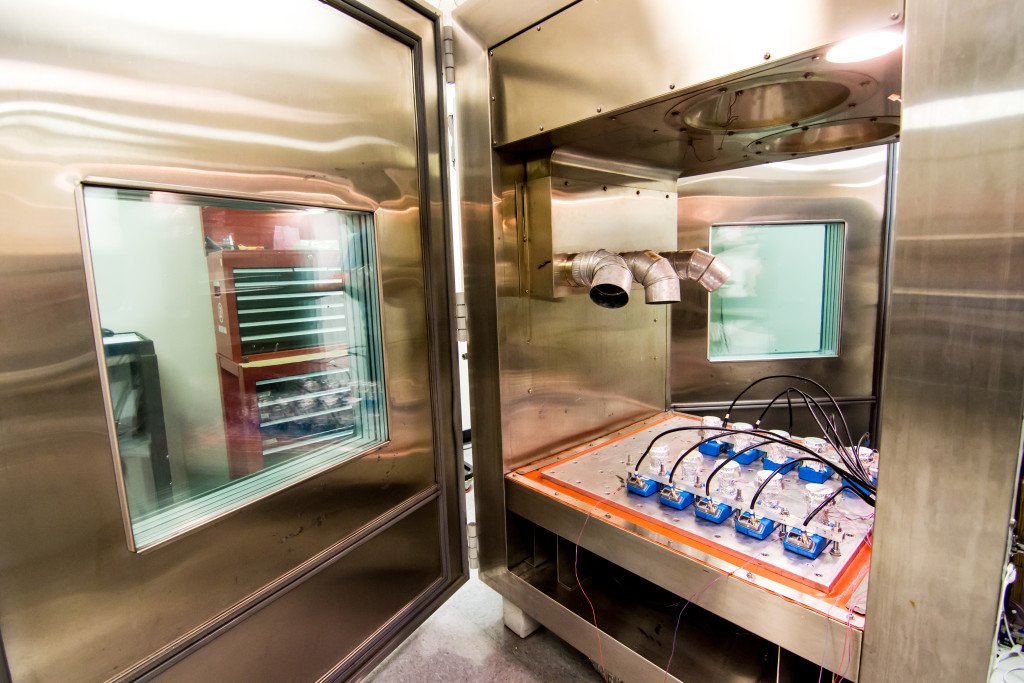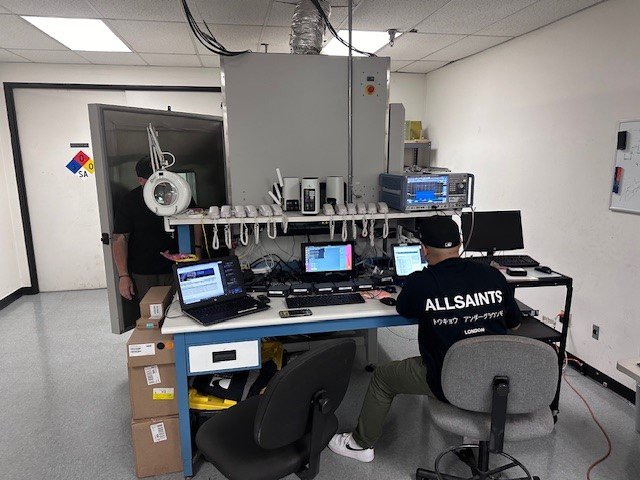What is HALT testing and how may it benefit my product?
HALT (Highly Accelerated Stress Testing) is a reliability testing method that when facilitated correctly has proven to provide a level of robustness and ruggedization rarely achieved by any other traditional methods of testing. Capitalizing on both singular and synergetic methods of stressors within the same test environment (chamber), latent anomalies have been proven to arise far more rapidly and consistently. The architecture of HALT was designed to simplify root cause failure analysis alleviating the time vs cost paradox to achieve faster design loopbacks. HALT continues to be embraced and then placed into the design process within many industries proving its efficacy.
HALT consists of four fundamental components:
Thermal step stress
Rapid thermal transitions
Vibration step stress
Combined environment
HALT testing performed for client: AT&T
HALT testing setup for client: AT&T
Qualmark HALT chamber characteristics (Typhoon 3.0):
Cavity dimensions: 45”W x 45”D x 35”H
Table size: Up to 36” x 36”, 4” grid pattern; mounting points are 3/8x16
Temperature range: -100°C to +200°C
Transition rate: 60°C/min
Vibration: 5 - 65 Grms (6 DOF broadband, quasi-random, repetitive shock). Single accelerometer control
Access ports: 2-3
Instrumentation: 2 control thermocouples, up to 5 integrated response thermocouples. Additional response thermocouples can be included with ancillary equipment (Fluke 2635A or equivalent)
Is my product a candidate for HALT?
Yes! We test products ranging from consumer electronics, to ventilators, to satellite components, and defense applications. This spectrum of industries illustrates how HALT can be applicable for most if not all devices - from consumable to mission critical. Recalls and sustainable engineering are costly, both financially and in consumer confidence.
So, why is HALT a valuable test for me?
Whether its 5,000 wall mount cameras, 1 ventilator, or a solar array on its way to an obscure galaxy; what level of reliability are you willing to achieve and at what cost?
Most asked question:
Can I calculate MTBF (mean time between failures) from HALT?
No. HALT cannot and will not provide this type of information; By finding all operational and destruct points HALT testing insures the lowest MTBF possible for the product eliminating all design-related random failures in time. The only other random failures or epidemic failures will only be related to manufacturing or supplier part variance. To eliminate those requires a Highly Accelerated Stress Screening technique called HASS.
Next month:
I will delve further into how the HALT environment should be applied, what is expected of the customer to provide/support, sample size, and how the synopsis of the test results can be interpreted and applied.
“There is the testing world, and there is the real world.” - author unknown, often quoted by Eric Gerlach





